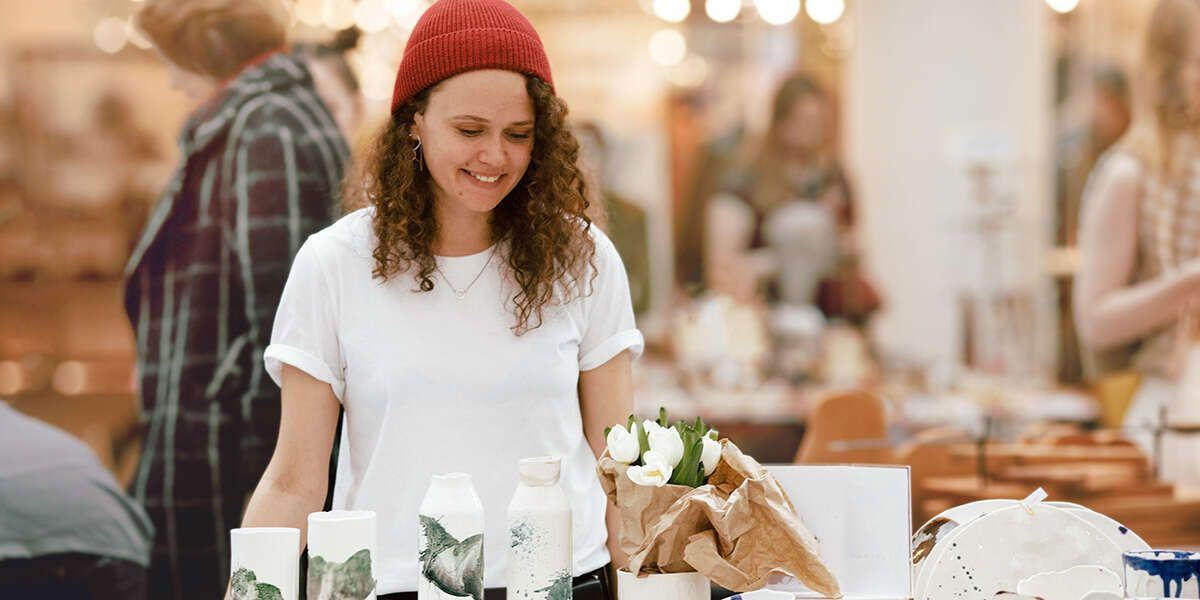Nine Things To Bring to Your Tradeshow Booth
Whether you’re a seasoned exhibitor or attending your first trade show, forgetting key supplies can seriously impact your performance.
Oser Communications Group leads the trade show publicity and periodicals industry, and we’d like to share this essential trade show packing list for a successful and low-stress event.
1. Make a Strong First Impression With a Branded Backdrop
Brand promotion is the reason you’re going in the first place, so a high-quality backdrop or banner should be at the top of your list of trade show booth essentials. Use your visual handshake to pull attendees toward your booth, and make sure it’s branded, wrinkle-free, and portable.
2. Don’t Forget a Branded Tablecloth or Runner
Table coverings are the next visual step in brand presentation. Choose good-looking covers to conceal unsightly storage and instantly elevate your booth’s appearance. A custom tablecloth with your logo is literally a stop sign for passing traffic.
3. Use Clear, Strategic Signage To Communicate Value
Well-designed signs highlight your services, promotions, and messaging. Check with the show’s promoter to find out what sort of signage you can display, and follow through. Consider retractable banners, tabletop signs, or even digital displays.
4. Equip Yourself With Business Cards and Handouts
This is a classic part of every pre-trade show checklist for a reason. Bring plenty of professionally printed cards and a few hundred brochures or flyers. These are the top conference display items that visitors actually take home.
5. Capture Leads With Digital or Paper Forms
Don’t miss out on future opportunities. Whether it’s an iPad with a CRM app or printed forms and clipboards, make sure your booth is ready to seamlessly collect names, emails, and interest levels.
6. Offer Giveaways That Keep You Top-of-Mind
Branded swag is a trade show staple. Stickers, tote bags, pens, or USB drives are low-cost and high-impact. Work to find gifts that are functional and give attendees something to remember you by.
7. Bring Power Strips, Extension Cords, and Backup Chargers
Electricity can be unpredictable at events, and every venue will have its own idiosyncrasies. Bring a couple of 10-foot extension cords, a surge-protecting power strip, and battery packs for your devices. The best booths don’t go dark!
8. Prioritize Personal Comfort and Stamina
A trade show is a marathon, not a sprint. Pack snacks, water, and first aid items, and wear comfortable (yet professional) shoes. When you’re energized, you engage better.
9. Keep a Toolkit and Cleaning Supplies on Hand
Pack a small kit with everyday event booth supplies, including scissors, zip ties, and some simple tools. It will come in handy during setup, and having cleaning supplies at the ready will keep your booth looking sharp.
Refine Your Exhibition Stand Packing List for Trade Show Success
Trade shows are fast-paced environments. Double-check your trade show packing list for peace of mind and a consistently professional display.
Let the experts at Oser Communications Group help you make your next trade show your best yet. From planning what to pack for a trade show to high-impact trade show promotion, we’re here to support your success. Call us at (520) 721-1300 to get started today.


